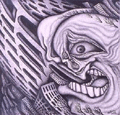A waviness has developed in a couple of areas in the hood of my Mark 3. It is subtle but easily seen in the glossy black surface and is about 6 inches across. My first thought was some sort of distortion due to heat, but one affected area is toward rear of scoop where there is very little engine heat. The wavy surface is both inside and out, so not just a surface defect. Car is always garaged in California with no environmental extremes. Car was painted and perfect 2 yrs ago.
It's abit of a mystery and would be good to understand before repaint. I would appreciate hearing if any of you are familiar with what I'm describing or have any ideas at all about the cause. Could it be some sort of delamination, which would suggest I replace the hood?
Your comments much appreciated,
Steve
- Home
- Latest Posts!
- Forums
- Blogs
- Vendors
- Forms
-
Links

- Welcomes and Introductions
- Roadster
- Type 65 Coupe
- 33 Hot Rod
- GTM Supercar
- 818
- Challenge Series
- 289 USRCC
- Coyote R&D
- Ask a Factory Five Tech
- Tech Updates
- General Discussions
- Off Topic Discussions
- Eastern Region
- Central Region
- Mountain Region
- Pacific Region
- Canadian Discussions
- Want to buy
- For Sale
- Pay it forward
-
Gallery

- Wiki-Build-Tech



 Thanks:
Thanks:  Likes:
Likes: 

 Reply With Quote
Reply With Quote


